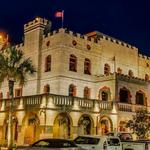Wedding of Makenzie & Flint


Things To Do
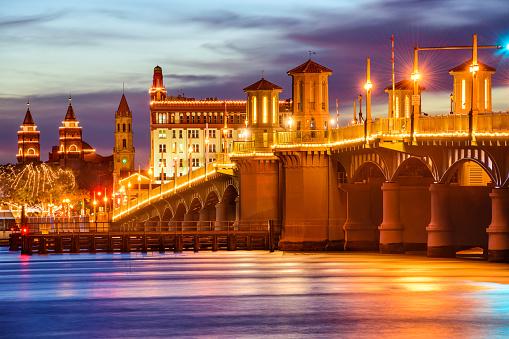
Saint George Street
Antiquities, historic attractions and delectable cuisine are just a few of the things you'll find on St. George Street, the city's central pedestrian thoroughfare. At the northern end of the street, visitors can explore boutiques like Sunburst Crystal and Tillie's Bath Cottage, as well as historic sites like the Huguenot Cemetery and the Oldest Wooden School House
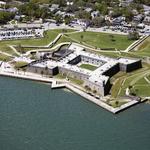
Castillo de San Marcos National Monument
Built between 1672 and 1695 by the Spanish, The Castillo de San Marcos served as a fort for more than 205 years. It's the oldest masonry fortification in the U.S. What is now a picturesque attraction in downtown St. Augustine once protected the newly established territory of Spanish Florida from the British and pirates. Additionally, it is one of only two forts in the world constructed from coquina, a semirare limestone composed of shell fragments.

Lightner Museum
An iconic building at the heart of historic St. Augustine. An extraordinary museum collection. Occupying the former Hotel Alcazar, a Gilded Age resort hotel commissioned by Standard Oil executive Henry Flagler, the Lightner Museum offers an immersive experience of art, architecture, history, and design.

St. Augustine Alligator Farm Zoological Park
Animal lovers of all ages will enjoy a visit to the St. Augustine Alligator Farm Zoological Park. The park was founded in 1893, but has been in its current location since 1920. It was accredited by the Association of Zoos and Aquariums in 1989. It's home to alligators, snakes, lemurs, sloths and many types of birds. It's also considered the only facility on Earth to house all 24 living crocodile species. While here, visitors can explore the exhibits on their own and enjoy interactive wildlife shows and animal feedings, which are offered throughout the day. For an extra thrilling experience, be sure to pay a visit to Crocodile Crossing, a 7-acre, 35-foot zip line course that soars over alligators and crocodiles.
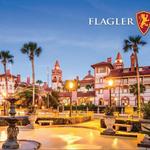
Flagler College
A private institution founded in 1968, Flagler College boasts lush gardens, sparkling fountains and stunning Spanish Renaissance architecture that St. Augustine travelers can explore. Built by Henry Flagler in 1888, the college was originally the Hotel Ponce de Leon and is a National Historic Landmark. Visitors can sign up for a guided tour through the school. Additionally, some trolley and historical sightseeing tours include stops at Flagler College. Recent visitors were fascinated by the incredibly unique buildings and noted that their tour guides were knowledgeable and friendly. They were also impressed by the intricate, well-maintained Tiffany windows in the dining area.
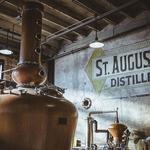
Saint Augustine Distillery
Bourbon lovers will feel right at home on a trip to St. Augustine, thanks to the St. Augustine Distillery. Founded in 2013, the family-owned and -operated spirit crafter makes bourbon on-site daily. The distillery also produces gin, vodka and rum. The attraction is housed in St. Augustine's original power and ice complex, which was built in 1907. Travelers can enjoy free tastings and self-guided tours seven days a week.
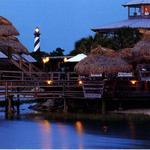
The Conch House Restaurant
For over 70 successful years, the Ponce family has owned and operated the Conch House Marina Resort. The Ponce family one of the oldest families in the United States and has been in St. Augustine for over 400 years. The property was purchased in 1946 by Jimmy Ponce and his wife Jackie, and was once the Coast Guard gunnery station. The business started as a 4 room hotel, called Ponces By The Sea in which the family lived in one room and rented the other rooms to guests. The Ponce family has been in the hospitality business for over 150 yrs, and it started with Ponces Sweet Shop which used to be in town behind the old opera house. The next venture was the Old Dutch Tavern, fashioned after a dutch windmill. (A picture of the Tavern can be seen inside the Captains room bar). The Tavern was located just west of the Conch House on Anastasia boulevard, just before the bridge of lions. If you ask any of the old timers, they would tell you this was the place to go.
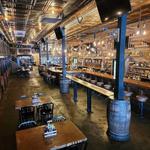
Prohibition Kitchen
Prohibition Kitchen is serving up music and style on St. George Street. This 1920s and Prohibition-era themed pub offers generous portions of locally-sourced bar food, craft cocktails, and live music every night. Prohibition Kitchen’s two-level seating area is outfitted in a vintage industrial style. Restaurant-goers may dine on the first floor in intimate booths for speakeasy vibes, or enjoy a meal on the balcony level overlooking the stage and bar area. Boasting the longest bar in the city, Prohibition Kitchen is an ode to fellowship and booze. The building has been artfully renovated using reclaimed materials from the original colonial structure, like the 400-year-old heart of pine ceiling boards, which were used to create the bar and booth tables at Prohibition Kitchen.

